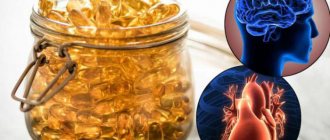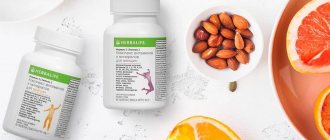Maintaining health requires a regular supply of essential nutrients and vitamins, including Omega-3 polyunsaturated fatty acids, but why do women need them?
If there is a lack of any nutritional element, vital organ systems can seriously suffer. The lack of any important ingredient, as a rule, has a hidden course and manifests itself in an advanced state with negative consequences.
Official Omega-3 Dosage Recommendations
Various major medical organizations have published their own expert opinions, but they vary widely.
In general, most of these organizations recommend that healthy adults take a minimum of 250–500 mg of a combination of EPA and DHA per day (, , ).
However, higher doses are often recommended for certain medical conditions.
The recommended daily intake (RDI) for alpha-linolenic acid is 1.6 grams per day for men and 1.1 grams per day for women ().
Summary:
There is currently no official recommended daily intake of EPA and DHA. However, most health organizations agree that 250-500 mg of a combination of EPA and DHA is enough for adults to maintain their overall health.
Drug interactions
If fish oil is taken with other drugs, the following effects may occur:
- Increased likelihood of vitamin A oversaturation.
- Reduced anti-inflammatory effect of glucocorticoids.
- Weakening the effects of taking medications with calcium.
- Increased likelihood of oversaturation of the body with calcium.
- Decreased absorption of vitamin A.
- Possibility of forming a toxic effect.
- Increased likelihood of increased intracranial pressure.
- Increased effect of cardioglycosides - risk of arrhythmia.
- When taking phenytoin, the need for vitamin D increases.
- When taking medications with phosphorus, the likelihood of developing hyperphosphatemia increases.
Omega-3 dosage for specific diseases
For the following diseases, it has been found that the dosage of omega-3 fatty acids needs to be adjusted.
Heart disease
One study involved 11,000 people who took 850 mg of combined EPA and DHA daily for 3.5 years. They experienced a 25% reduction in heart attacks and a 45% reduction in sudden death ().
The American Heart Association, among other organizations, recommends that people with coronary artery disease take 1,000 mg of combined EPA and DHA daily, and that people with high triglyceride levels take 2,000 to 4,000 mg daily (, , ).
However, several large reviews have not found any beneficial effects of omega-3 fatty acids on heart disease (, ).
Depression and anxiety
Research shows that high doses of omega-3s, ranging from 200 to 2200 mg per day, can reduce symptoms of depression and anxiety (, , , ).
In cases of mood swings and mental disorders, taking a supplement with a higher amount of EPA than DHA may be optimal.
Cancer
High intakes of fish and omega-3 fatty acids have been associated with a reduced risk of breast, prostate, and colon cancer (, , , ).
However, correlation does not equal causation. Whether omega-3 fatty acid intake affects cancer risk needs to be confirmed by controlled studies.
Summary:
Omega-3 fatty acids may improve disease. The effective dose is 200 to 4000 mg per day.
Contraindications
The twentieth century brought many discoveries to the world, one of them is Omega-3 PUFAs. Scientists have identified the beneficial effects of these acids on almost all systems of the human body. Supplements with Omega-3 acids can normalize hormonal levels and blood pressure, activate brain function and improve memory, lower cholesterol and strengthen the walls of blood vessels, prevent the risk of developing cancer and improve immunity.
But, like any other substance, no matter how valuable it is, there are contraindications for taking Omega-3 acids. The intake of polyunsaturated fatty acids should be sharply limited to people with poor blood clotting, also after surgery and with bleeding wounds, with a tendency to allergies and individual intolerance.
The use of a good quality Omega 3 dietary supplement for a woman will be an excellent support for the body, but subject to the dosage. Pregnant women are advised to consult a specialist to adjust the intake rate.
You should refrain from taking it if you are diagnosed with:
- hemophilia;
- injuries with blood loss;
- inflammation of internal organs;
- increased calcium deposition (hypercalcemia);
- diseases of the genitourinary system;
- fibroids;
- liver cirrhosis;
- severe stage of tuberculosis;
- varicose veins and inflammation of the gastrointestinal tract.
Omega-3 dosage for children and pregnant women
Research shows that omega-3 fatty acids, especially DHA, are vital before, during and after pregnancy (, , , ).
Almost all official recommendations recommend taking 200 mg DHA (, , ) in addition to your regular dosage during pregnancy and breastfeeding.
Several international and national organizations have published recommendations for infants and children to take 50–100 mg of a combination of EPA and DHA daily ().
Summary:
An additional 200 mg of DHA is recommended for pregnant and breastfeeding women. The recommended dose for infants and children is 50–100 mg of combined EPA and DHA per day.
Omega-6 intake may affect your omega-3 needs
The typical Western diet contains approximately 10 times more omega-6 than omega-3. These omega-6 fatty acids come primarily from refined vegetable oils that are added to processed foods (,).
Many experts believe that the optimal ratio of omega-6 to omega-3 is closer to 2:1 ().
Omega-6 and omega-3 compete for the same enzymes that convert fatty acids into their biologically active forms (,).
Therefore, if you want to improve your omega-3 status, you should not only get enough omega-3s from your diet and supplements, but also consider reducing your intake of vegetable oils high in omega-6.
Summary:
Your body can function best with balanced amounts of omega-6 and omega-3.
Side effects, contraindications and overdose
Side effects are rare. Exceptions are cases of overdose.
If a person taking fish oil has an allergy, then reactions and poor blood clotting may occur.
It should not be drunk if you have diseases of the kidneys or genitourinary system, since this product catalyzes the division of connective tissue cells.
Contraindications:
- gallstone pathology;
- kidney stones, pancreatitis;
- hypercalcemia;
- thyrotoxicosis;
- kidney and liver diseases;
- tuberculosis;
- blood diseases;
- skin diseases;
- pregnancy;
- children under 7 years old.
In case of overdose, the following may occur:
- poor appetite;
- vomiting, nausea;
- drowsiness, weakness;
- diarrhea;
- Your head and bones may hurt.
Excessive intake of omega-3s may be harmful
The Food and Drug Administration (FDA) states that omega-3 supplements containing EPA and DHA are safe as long as doses do not exceed 3,000 mg per day.
On the other hand, the European Food Safety Authority (EFSA) notes that it is safe to get up to 5,000 mg per day from supplements.
These warnings are in effect for several reasons. On the one hand, omega-3s can cause blood thinning or excessive bleeding in some people.
For this reason, many organizations recommend that people planning surgery stop taking omega-3 supplements 1 to 2 weeks in advance.
The second reason has to do with vitamin A. This vitamin can be toxic in large quantities, and some omega-3 supplements, such as cod liver oil, contain quite a lot of it.
Finally, taking more than 5,000 mg of omega-3 has never been shown to provide any additional benefit, so it's not worth the risk.
Summary:
Taking up to 3,000 to 5,000 mg of omega-3s per day appears to be safe, although such a high intake is probably not necessary for most people.
Indications for use
The product is good for children. It strengthens the skeletal and muscular systems. The child will grow faster and not lag behind in mental development.
The substance has a good effect on motor skills, reduces childhood hyperactivity , and strengthens the nervous system.
You should think about taking fish oil when your nails break, hair falls out, or your skin becomes dry or flabby.
This product rejuvenates the body, restores cells, and normalizes hormones. A striking example of this is the women of the land of the rising sun. Japanese cuisine contains many fish and seafood dishes.
During pregnancy, gynecologists prescribe the product to expectant mothers for the following reasons:
- it strengthens the baby’s skeletal system inside the womb;
- for the prevention of premature birth;
- The baby's coordination improves.
Omega-3 Supplement Doses
Omega-3 fatty acid supplements, including fish oil, contain the long-chain omega-3 fatty acids EPA and DHA.
To find out how much EPA and DHA a supplement contains, it is important to read the label or instructions for your omega-3 supplement.
The amounts of EPA and DHA in different supplements can vary widely, and the labels can be confusing. For example, a supplement may contain 1000 mg of fish oil, but the levels of these two fats may be much lower.
Depending on the concentration of EPA and DHA, you may need to take up to eight capsules per day to reach the recommended amount.
Summary:
It is important to consider not only the amount of fish oil a supplement contains, but also the actual amount of EPA and DHA it contains. This helps ensure you're getting enough EPA and DHA.
Instructions for taking supplements
Manufacturers produce children's preparations with fatty acids in various dosage forms, each of which has its own advantages and disadvantages. The main types of drugs presented on the pharmaceutical market:
- Medicines in liquid form. Such dietary supplements with Omega-3 are very convenient to take for children under two years of age who will not be able to swallow the capsule. The package includes a special measuring pipette or spoon, which makes dosing the oil solution easier. The disadvantage is that after opening the bottle, fish oil oxidizes quite quickly, so you need to choose small volume products, especially for infants.
- Capsules. Supplement capsules are often made in a variety of fruit flavors to make them easier to take. This dosage form is recommended for children over 3 years of age who can swallow the capsule.
- Chewable tablets. Such dietary supplements are made in the form of bears, fish and other figures to interest the baby and turn the process of taking supplements into a game. High-quality preparations do not contain artificial flavors or dyes, so they will not harm the child.
Please note: Popular yummy Omega-3 children's candies on the market contain extremely small amounts of the vitamin (no more than 50 mg per serving). Therefore, to meet your daily requirement, you need to eat a lot of sweets. They contain sugar, sweeteners and other substances that are harmful to the teeth and digestive system.
Tips for use
Omega-3 supplements are medicinal products, so you should visit your pediatrician before starting the course. After examining the child, the doctor will determine how much dietary supplement to take and in what dosage. On the first day, it is recommended to give your baby only one capsule or chewable vitamin and monitor his condition. If no suspicious symptoms appear, you can continue to take vitamins.
Liquid Omega-3 is dosed according to the manufacturer's instructions on the packaging and added to food. The drug in capsules or tablets is taken with meals, with a sufficient amount of water or juice. If your child refuses to take the medicine, you can carefully cut the capsule and mix the contents with his favorite food. The disadvantage of this method is that it is difficult to control how much active substance enters the body.
Summarize
- When taking omega-3 fatty acid supplements, always follow the directions on the label.
- However, keep in mind that omega-3 requirements vary from person to person. Some people may need more than others.
- The recommended intake level for alpha-linolenic acid is 1.6 grams per day for men and 1 gram per day for women.
- In contrast, there are no official guidelines regarding long-chain omega-3 supplementation. However, medical organizations generally recommend a minimum of 250 mg and a maximum of 3,000 mg of combined EPA and DHA per day, unless your doctor instructs otherwise.
Tags: Omega-3
- Related Posts
- Simple sugars (simple carbohydrates): what are they, list, harm
- 12 Health Benefits of DHA (Docosahexaenoic Acid)
- Red yeast rice: benefits, side effects, dosage
« Previous entry
Impact on the female body
Why is it useful?
What are the benefits of fish oil capsules for women?
It is no secret to many that women actively use this product of animal origin when caring for their hair.
The effect of fish oil is simply phenomenal - hair becomes thick, since Omega amino acids prevent hair loss, fragility, and dullness.
Ω-3 acids also accelerate hair growth and affect the structure. To have shiny, healthy hair, you need oleic and palmitic acids.
This animal fat affects intelligence and vision; regular intake will prevent cataracts. The saturation with useful minerals cannot but affect the condition of the skin - it becomes smoother and more elastic.
Fish oil is a high-calorie product, but it will be useful for those who want to lose weight . It stimulates muscle function, while at the same time accelerating mineral metabolism.
This video will tell you about fish oil and its properties in the fight against diseases:
This is the range of beneficial properties of fish oil for women.
Is there any harm
Like any dietary supplement, fish oil has its disadvantages:
- Ω-3 does not stay in the body - as much as it enters the body, so much must be used up;
- with an excessive dose, disturbances in the formation of bone tissue are possible;
- if fish caught in ecologically polluted areas of the ocean were used in the production of fish oil, this can lead to liver and kidney diseases, and a number of other unpleasant diseases.











